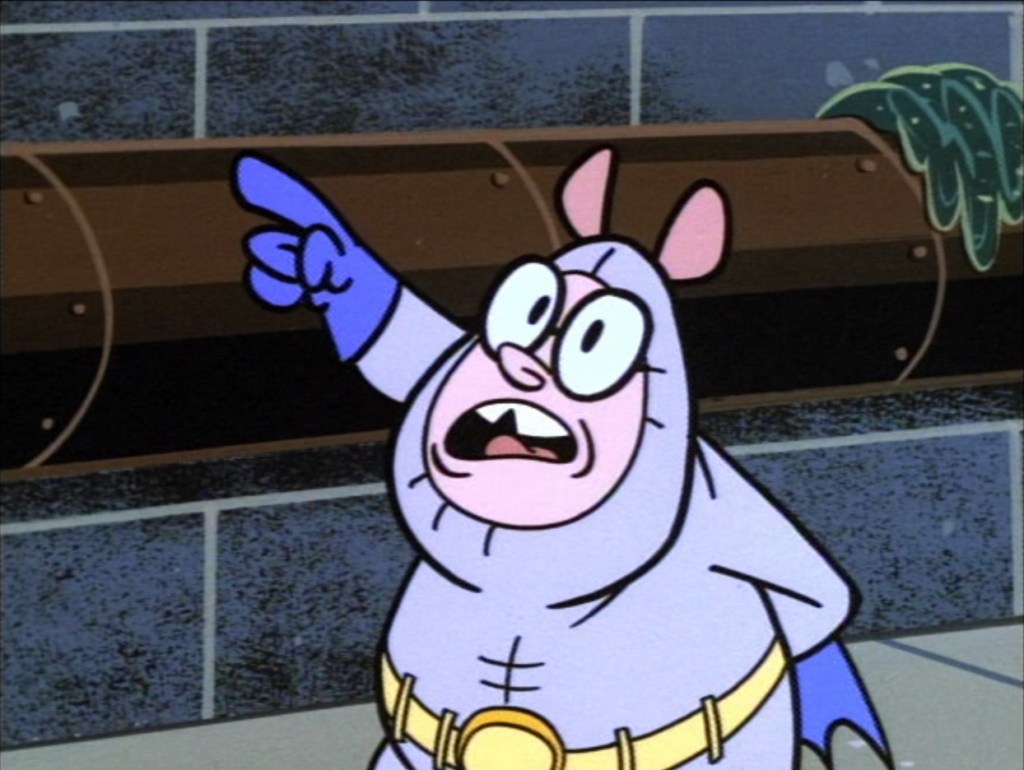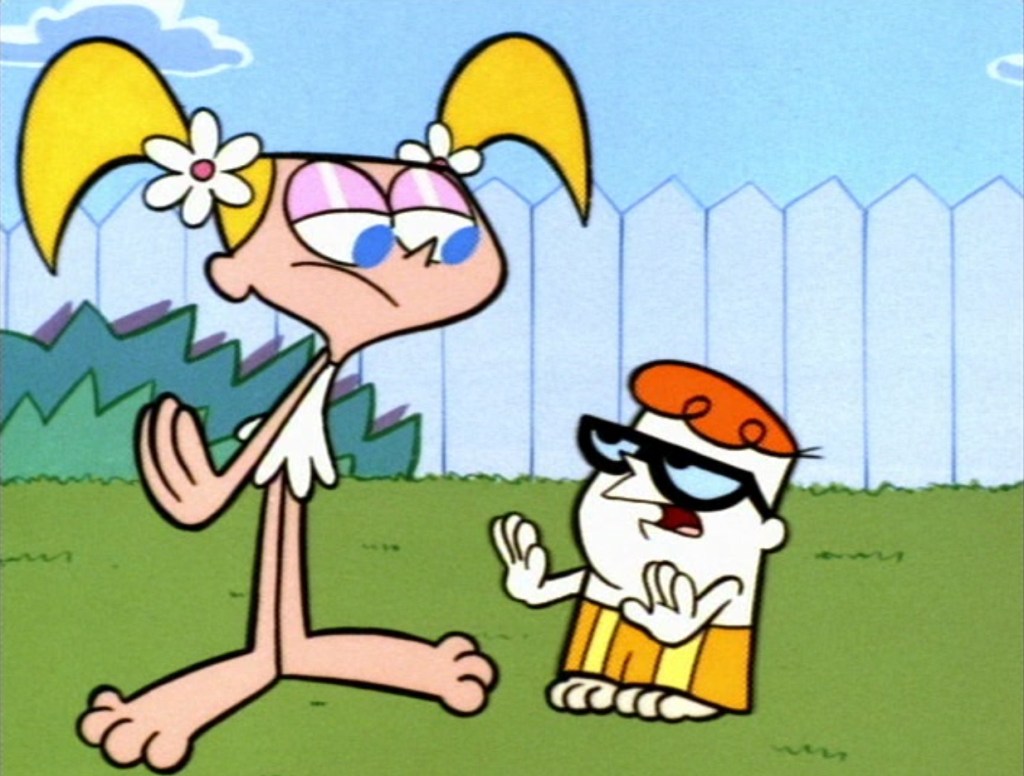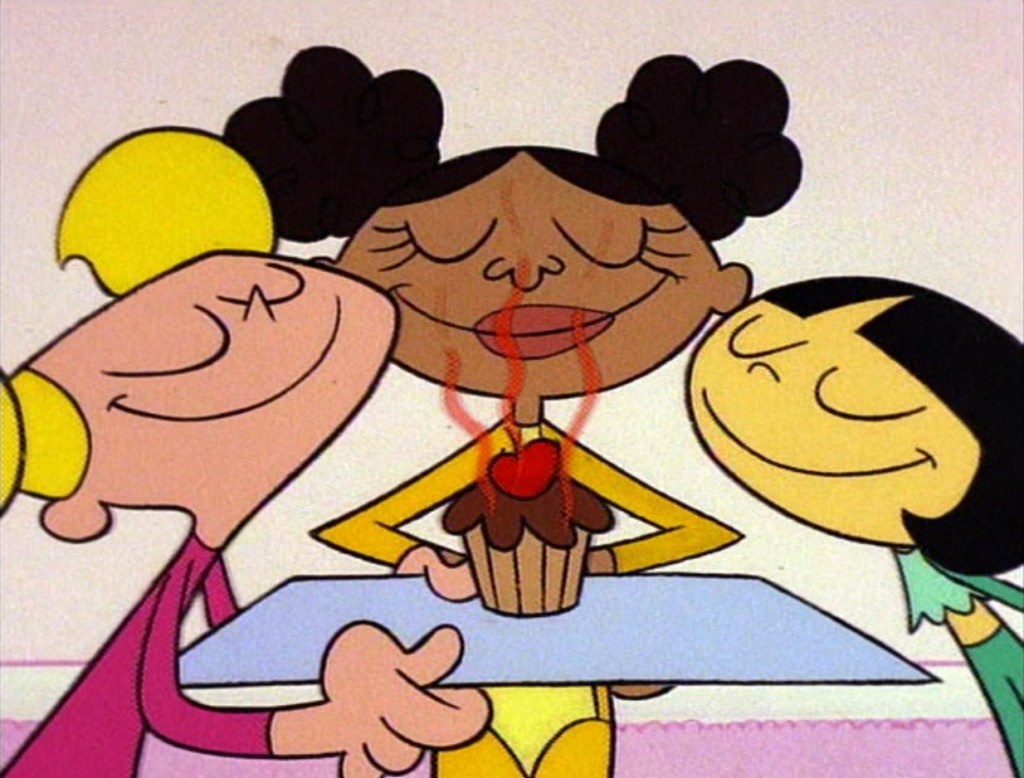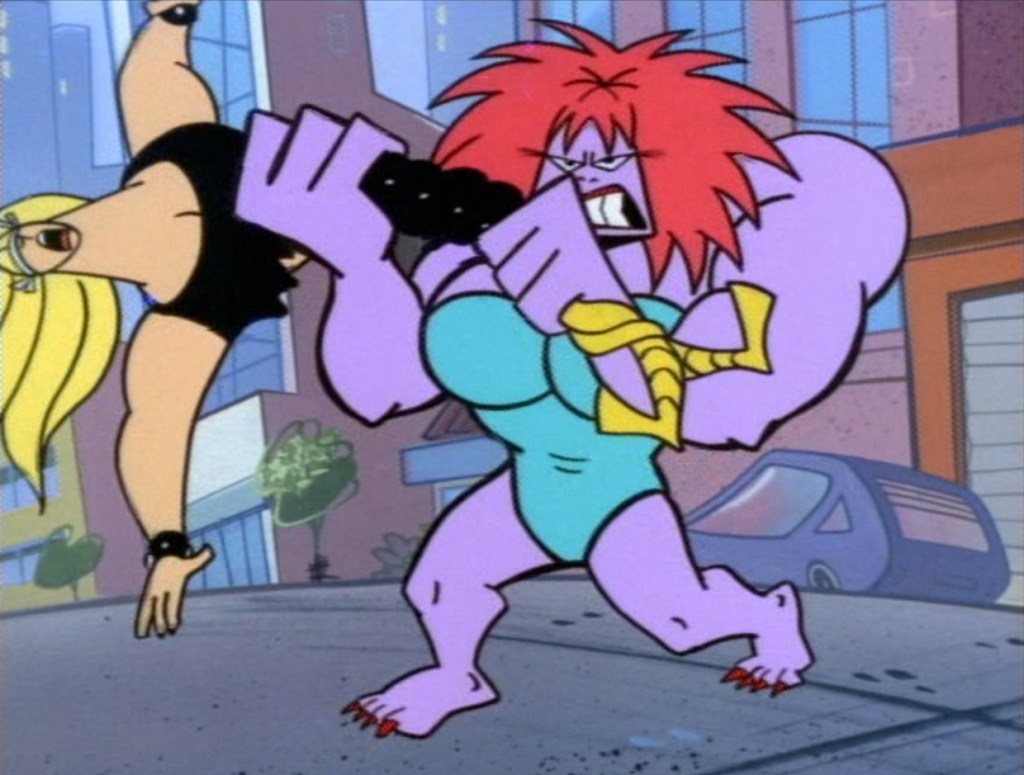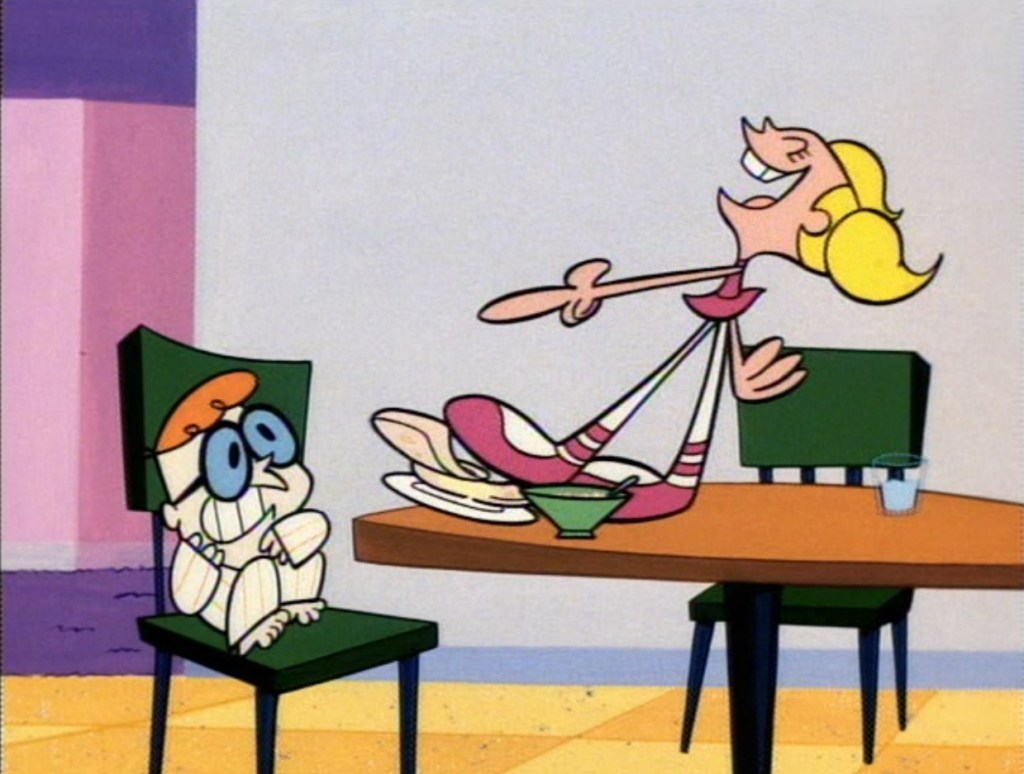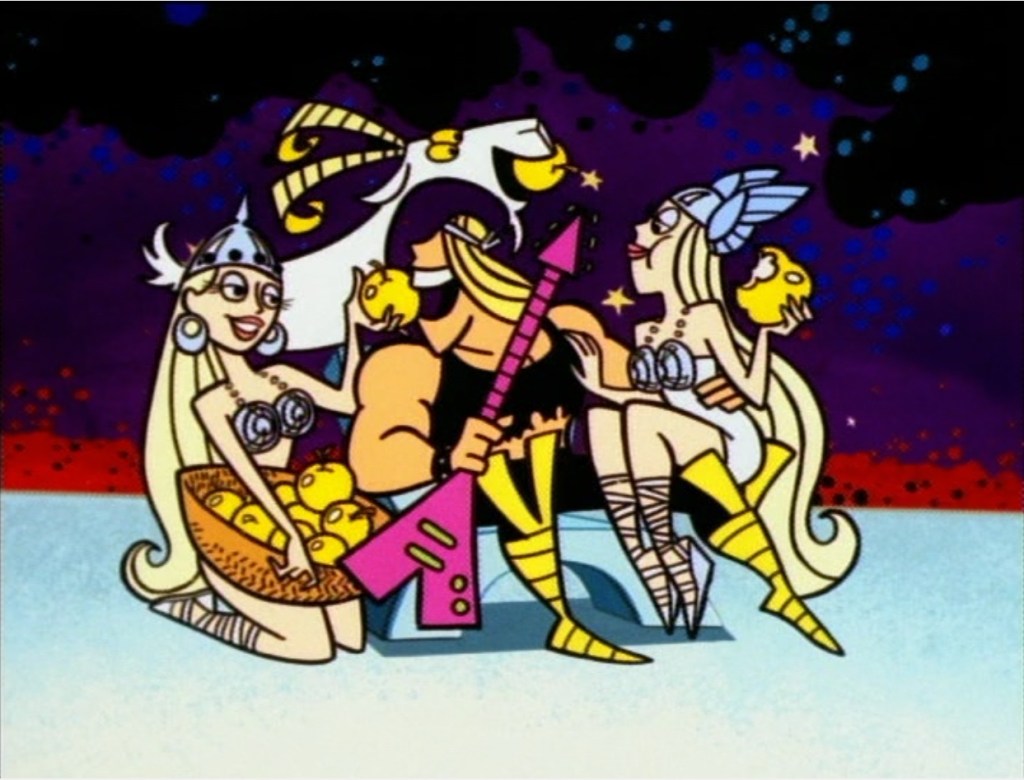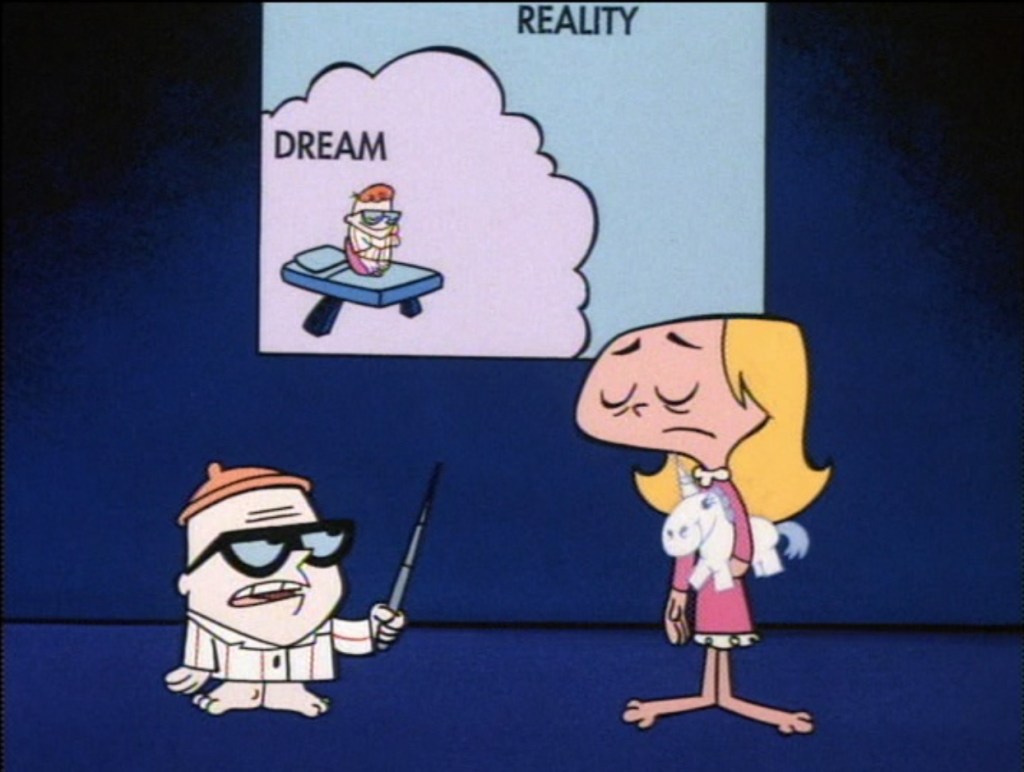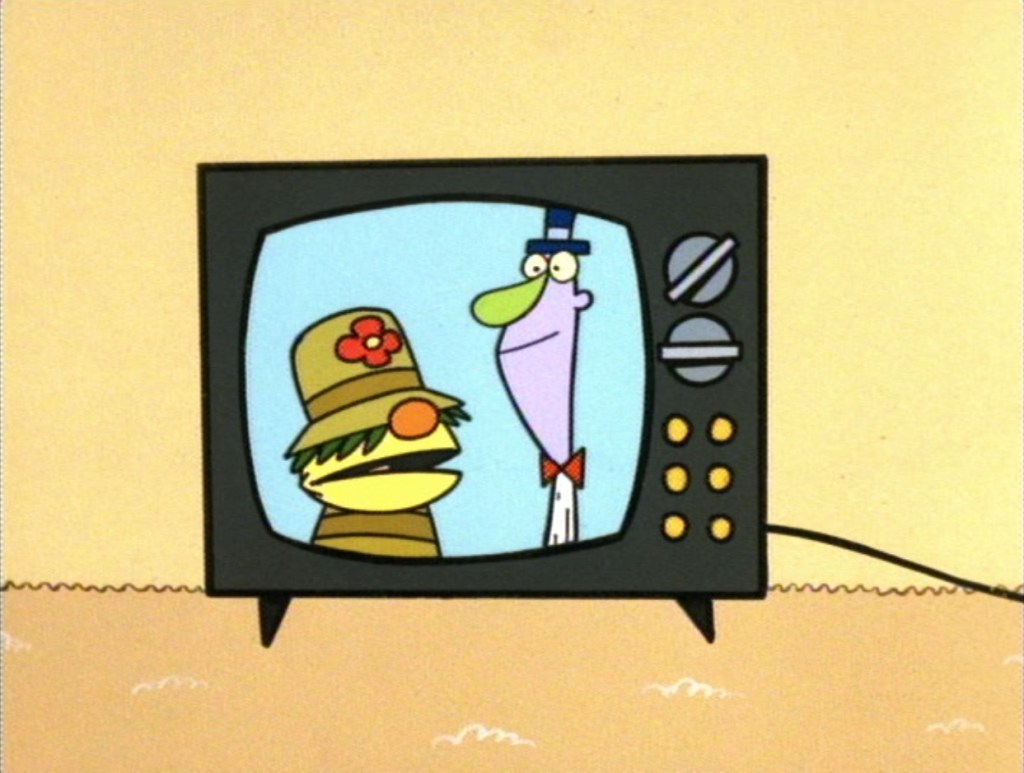You are currently browsing the tag archive for the ‘1996’ tag.
Directors: Gary Trousdale & Kirk Wise
Release Date: June 21, 1996
Rating: ★★★
Review:
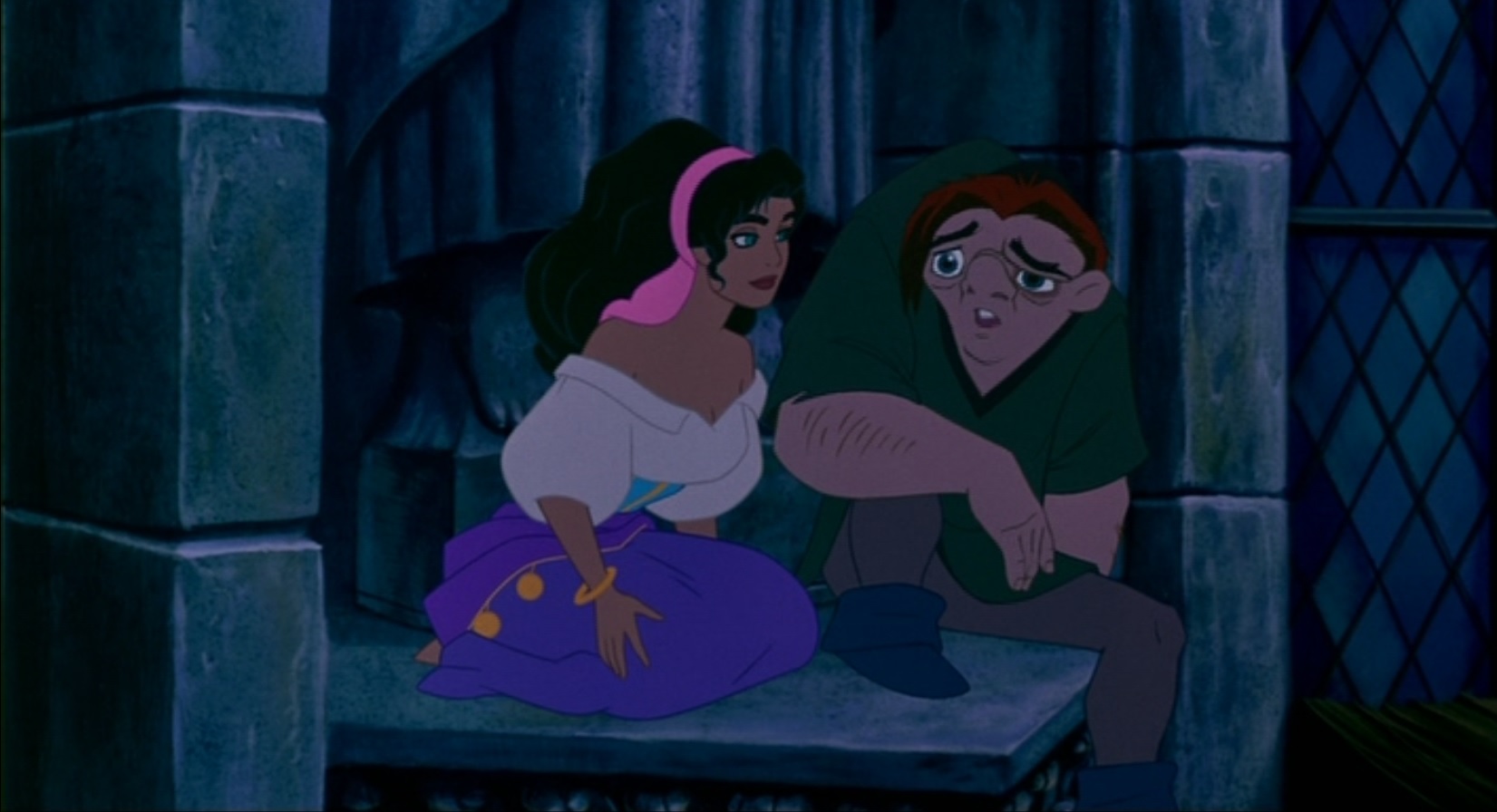
After feature adaptations of several fairy tales and children’s books, and even a non-fiction book on aerial warfare (‘Victory through Air Power’ from 1943), ‘The Hunchback of the Notre Dame’ marks the studio’s very first animated adaptation of classic literature, in this case the historical novel of the same name from 1831 by French author Victor Hugo.
Of course, Disney’s version is not the first movie adaptation of Hugo’s hefty book. The most famous predecessors are a silent version from 1923 starring Lon Chaney as the title character, and one from 1939 starring Charles Laughton. The latter adaptation changed Hugo’s bleak and depressive ending into a more uplifting one. Disney gladfully follows suit, ending its own film remarkably upbeat, which is something the more avid Victor Hugo fan will hardly get used to. But more about that later.
The film starts with a ‘Pinocchio’-like opening shot with the camera zooming into the streets of Paris. Immediately it becomes clear that this new adaptation of ‘The Hunchback’ will be a musical, because the first song, ‘The Bells of Notre Dame’ kicks in right away. It is sung by puppet player Clopin (Paul Kandel), whom we zoom into shortly, and who is the initial narrator of the tale, telling about events occurring twenty years before. This is the first of nine songs in 81 minutes, making ‘The Hunchback of the Notre Dame’ one of the most song-rich of the Disney musicals.
After the six-minute intro the film’s title appears, and we immediately cut to young adult Quasimodo (voiced by Tom Hulce of Amadeus fame), who remains misshapen as in the original novel, having both an asymmetrical body and face, with one bad eye, a hump, and a limping walk. But the animators also immediately make clear that this is a friendly, kind-hearted, and harmless person. Disney’s Quasimodo is kind and gentle and has a nice voice (by Tom Hulce), so we as an audience hardly must overcome any prejudice.
Moreover, within the limitations of the character’s literally description, the character designers really tried to make Quasimodo as appealing as possible. For example, compare his appearance to that of either Chaney or Laughton, who both look much uglier, and must overcome initial repulsion by the audience by great acting. Disney’s Quasimodo, on the other hand, is instantly likeable, and the viewer even struggles to comprehend why he isn’t loved more by the citizens of Paris.
Quasimodo’s first scene also shows the weird dualism of this movie: at one hand the studio really wants to tell a serious story, with heavy-handed themes, and dramatic music. On the other hand, the film makers apparently don’t dare to leave the cuddly-wuddly world of earlier Disney children’s films, and this leads to a schizophrenic end product, failing to be either entirely for children or the dark tale it could have been.
For example, the studio gives Quasimodo three humanized gargoyles to talk to (perhaps another idea taken from the 1939 film version, which ends with Quasimodo talking to a gargoyle). The appearance of the three gargoyles feels disappointingly formulaic and out-of-tune after the dramatic introduction. The childish half of the movie is further enhanced by the present of an intelligent pet goat and an equally humanized horse called Achilles. These two animal characters don’t speak, but clearly belong to the world of obligate animal sidekicks, which permeate the Disney films since ‘The Little Mermaid’ (1989).
True, the gargoyles appear only to be real to Quasimodo, turning to stone as soon as any other character is in the same room, but as we often watch them move without Quasimodo being aware of them, we’re led into believing these stone characters are real, and only pretending to be lifeless when other people are around.
Despite the presence of these cute characters, ‘The Hunchback of the Notre Dame’ is arguably Disney’s darkest movie since ‘Pinocchio’ (1940), addressing issues like prejudice, discrimination, intolerance, and hypocrisy.
Most striking in this respect is the character of the villain judge Frollo, voiced forcefully by Tony Jay. His lust for Esmeralda is clearly an adult theme. This becomes most apparent in the character’s own song of desire, with its erotic fantasy depictions of Esmeralda depicted in the flames he watches. Masterly animated by Kathy Zielinski, this is arguably the movie’s best song, highlighting the complexity of the character. Frollo isn’t just bad, he’s torn inside. Frollo all too willingly marries his lust to his sense of justice and sees no problem in purging the town’s gypsies only to find his object of desire. In fact, Frollo is the most interesting character of the whole film, and certainly one of the most interesting of all Disney villains, for his evilness comes from partly from fanatism and bigotry, and is not purely selfish, even though that’s an important component of his character, too.
Another adult theme is the love triangle between Quasimodo, Esmeralda (voiced by Demi Moore) and captain Phoebus. Esmeralda is the focal point of the movie, being the object of desire of the three male leads, if in different ways for each of them. Phoebus is a bland hero character, and the only one who doesn’t sing. At one point Quasimodo actually believes Esmeralda loves him, and he has to overcome his jealousy of his more handsome rival to help Phoebus finding Esmeralda.
Yet, as the film makers don’t really choose between a light-hearted and a serious narrative, the film remains an odd blend. For example, Quasimodo’s rescue scene is played out very dramatically and seriously. But this scene is followed by a rather frivolous storming of the cathedral, full of silly gags and broad, cartoony animation. One can even hear the Goofy yell when the soldiers fall from great heights to a – I’d say – certain death. This lack of choice troubles and harms the film big time. A Disney cliché scene in which a character seems dead but turns out not to be (see ‘Pinocchio’ and ‘Jungle Book’) doesn’t help either.
But what really becomes hard to swallow is the film’s ending, which is all too happy, defying every believability. In Disney’s version Quasimodo seemingly starts a revolution, and the film makers want us to believe that following the film’s events the Middle Ages stopped right there and propelled all citizens of Paris into a post-modern world of tolerance and rainbow harmony, free from despotism, prejudice, and discrimination. If only. For example, ninety years after the events depicted here Paris would witness the atrocities of the St. Bartholomew’s Day massacre. I’m afraid that although Victor Hugo’s original ending may the more gruesome, it’s also the more realistic one.
The film is more successful as a musical than as a retelling of Victor Hugo’s novel. Alan Menken’s music is in the same modern musical vein as earlier Disney musicals, like ‘Beauty and the Beast’ (1991) and ‘Aladdin’ (1992), but the tone is much more dramatic, verging on the edge of bombast. Unique for this movie is that the score remains its musical character even when there’s no singing. An unexpected element of his score is Menken’s use of leitmotivs. Especially Frollo is identified by a particularly well-composed melody, which recurs throughout the movie. Menken may count this melody as one of his very best ever. Frollo’s song is the film’s dramatic highlight, and as said the best song of the whole film, but Menken’s score reaches epic heights during the rescue scene, when a choir singing in Latin adds to the musical suspense.
The only real mistake in the score is the Gargoyle’s song, the film’s only light-hearted tune. In this tune we’re suddenly confronted with many anachronisms and French cliches completely out of tune with the rest of the movie, like images of a casino, a barber, and a grand piano. What worked in ‘Aladdin’ falls completely flat in ‘The Hunchback of the Notre Dame’. These anachronisms come across as a lack of ideas, instead of original twists, and pull the viewer out of the story, instead of taking him further in. Yet, it must be said that even this song shows the grim image of three people being hanged, even if it’s in puppet form. In the same way, a later song by a bunch of scoundrels remains very merry, even though it’s about killing.
The film’s design is noteworthy for its moody color palette, with blues, purple and orange as its principal colors, which permeate almost all scenes. The human designs are more elaborate, yet less artful than before, with Esmeralda and Phoebus being particularly bland. Unfortunately, somehow, it’s this more generic design that would become standard in the final traditionally American animated films of the late nineties and early 2000s.
The human designs may lack character, their animation is by all means outstanding, and shows that the Disney studio was at the very top of its craft. An example is the Topsy-Turvy song. Set at the Feast of Fools (which was actually forbidden by 1431, while the action takes place in 1482, but this is Victor Hugo’s error), this song features elaborate movement, fast cutting, all kinds of camera angles, and many different characters, both traditionally animated and computer animated. But all the movement and the characters’ emotions remain readable all the time. In fact, one can watch this sequence in silence and still know what’s going on.
Other pieces of animation I particularly like is when Frollo wriggles his sword out of a piece of wood while entering the cathedral, and the one in which Esmeralda asks Quasimodo to come outside, shot from Quasimodo’s perspective, thus making Esmeralda reaching out to us. But these are just examples in a film overflowing with excellent character animation.
Computer animation is limited to special effects, especially for creating crowd scenes. With help of computers, the studio could generate crowds of hundreds of people, without having to animate each person individually. When one looks closer, the animation looks terribly stiff and lifeless, but as the eye normally follows the fully animated leads, the result is convincing enough, and luckily not out of tune with the fully animated lead characters.
In all, ‘The Hunchback of the Notre Dame’ is a well-made film with a very interesting musical score, and great animation. It’s a daring piece into more serious territory, something the studio would never repeat. And I understand why, because as long as the Disney studio doesn’t dare to leave its compulsory family character, it will never succeed in retelling dramatic stories like Victor Hugo’s ‘The Hunchback of the Notre Dame’ convincingly. This film certainly fails to do so, despite all the effort, and remains a schizophrenic product that leaves the viewer wondering what it could have been if the studio would have made more daring choices.
Watch the trailer for ‘The Hunchback of the Notre Dame’ and tell me what you think:
‘The Hunchback of the Notre Dame’ is available on Blu-Ray and DVD
Directors: Stefan Fjeldmark & Karsten Kiilerich
Release Date: 1996
Rating: ★★★★★ ♕
Review:

‘When Life Departs’ is a cute little Danish film in which eight children share their thoughts on death.
Their musings include ideas on the soul, on heaven, on hell, on God and reincarnation. These are illustrated with very simple, but very charming color pencil drawings on monochrome backgrounds. The drawing deliberately have a childlike, pseudo-clumsy quality, but the animation is, in fact, of a very high degree. Especially the depiction of the children talking is very well done. Despite the simplicity of the drawings these scenes betray a wide range of emotions and involuntary gestures in a short time span.
One stunning scene is one child’s view of heaven, illustrated by an ever in-zooming background animation, as if one flies through the endless heavenly landscapes. At times the pleasant animation helps to keep the subject light. Nevertheless, the story of a boy who has lost his baby brother remains poignant and infinitely sad.
Watch ‘When Life Departs’ yourself and tell met what you think:
‘When Life Departs’ is available on The Animation Show of Shows Box Set 3
Directors: Alain Gagnol & Jean-Loup Felicioli
Release Date: 1996
Rating: ★★★★½
Review:

The cinematic duo of Alain Gagnol and Jean-Loup Felicioli belong to France’s most interesting animation film makers.
In the 2010s the two came to prominence with the equally idiosyncratic as entertaining animated feature films ‘Une vie de chat’ (A Cat in Paris, 2010) and ‘Phantom Boy‘ (2015). But even way back in 1996 they made an impression at animation festivals with ‘L’égoïste’ (The Egotist), a very short film about a man only loving himself. When the man falls in love with a woman, it’s because she resembles himself. All’s well until…
‘L’égoïste’ was made at the Folimage studio, which would be associated with Gagnol and Felicioli from then on. While Gagnol provided the scenario and the animation, Felicoli was responsible for the graphic design, which is a charming and very colorful type of expressionism. Both characters and background art is heavily distorted, with houses and furniture being skewed and crooked. The animation is relatively sparse but effective.
The film uses a narrator, being the voice of the egotist and unfortunately all too present music by Serge Besset. As the music hardly comments on the images this is the weakest aspect of a film that otherwise impresses because of its original visual style and very lean story telling.
‘L’égoïste’ is available on the DVD ‘Pris de Court – 14 films courts de Alain Gagnol & Jean-Loup Felicioli’ which features English soundtracks
Director: Phil Mulloy
Release Date: 1996
Rating: ★★★★½
Review:

‘Thou Shalt Not Covet Thy Neighbours Wife’ is the tenth and last of Phil Mulloy’s Ten Commandment films. This installment is the longest of the ten, clocking nine minutes compared to the usual four to five, and also the funniest.
In this short we follow Buck, who falls in love with his dog-loving married neighbor Sally-Ann. In order to be with her he swaps places with the dog…
Mulloy’s tale is more sophisticated than this synopsis, but it’s best not to reveal too much, lest not to spoil the fun. Joel Cutrara’s voice over is only heard in the beginning. During the rest of the cartoon the fun is greatly enhanced by the cartoony voices and silly images. Mulloy’s Ten Commandment series may be a mixed bag, the series at least ends with a bang.
‘Thou Shalt Not Covet Thy Neighbours Wife’ is available on the DVD ‘Phil Mulloy Extreme Animation’
Director: Phil Mulloy
Release Date: 1996
Rating: ★★★
Review:

‘Thou Shalt Not Covet thy Neighbours Goods’ is the ninth installment of Phil Mulloy’s The Ten Commandments series.
Once again the short is told by Joel Cutrara and this time he tells about Cisco, who builds a commercial success out of electronic torture devices. Cisco is presented as the hero of the movie, but his story is a cynical one, involving exploitation of workers and suppression of the masses.
Despite the bleak images, Cutrara’s voice over remains joyful, and the happy atmosphere is enhanced by some particularly cartoony vocalisations.
‘Thou Shalt Not Covet Thy Neighbours Goods’ is available on the DVD ‘Phil Mulloy Extreme Animation’
Director: Phil Mulloy
Release Date: 1996
Rating: ★★★
Review:

Based on the reminiscences of violinist and composer Alex Balanescu ‘The Wind of Changes’ is one of Phil Mulloy’s longest and most poetical films.
Balanescu’s portrait of communist Romania is a dark one, but his impressions of New York and London are hardly any better. Balanescu’s remarks are wry and depressing, and Mulloy illustrates these with associative and sombre pictures in his typical crude cut-out animation style.
The film jumps forward and back into time and has a stream-of-consciousness-like feel. Some of the images are very powerful, like a snowman being shot. But it’s Balanescu’s score that despite Mulloy’s powerful imagery, is the most beautiful aspect of the film. Unfortunately, Balanescu’s music almost drowns out the voice-over, making the narrative hard to follow.
Watch the first part of ‘The Wind of Changes’ yourself and tell me what you think:
‘The Wind of Changes’ is available on the DVD ‘Phil Mulloy Extreme Animation’
Director: Jan Švankmajer
Release Date: August 1996
Rating: ★★★½
Review:

Although the move from animation to live action clearly was a gradual one (after all, ‘Alice‘ contained quite a bit of live action, while ‘Faust‘ was a live action film augmented with puppetry and animation), ‘Spiklenci slasti’ (Conspirators of Pleasure) can be regarded Jan Švankmajer’s first non-animated film, even if it stills contains a few bits of stop-motion and pixilation.
The change of technique doesn’t mean a change of style, however. The film is 100% Švankmajer throughout, with its complete lack of dialogue, its sound design (which is very reminiscent of that of animated films, indeed, with its emphatic sounds – we even hear the nonexistent sound of blinking of eyes), its idiosyncratic use of music (each individual has his/her own accompanying piece of music), its extreme close-ups, its sets of old buildings in a state of decay, and of course, a high dose of surrealism.
‘Spiklenci slasti (Conspirators of Pleasure)’ is an erotic film without sex. The titles are shown on a background of 18th century pornography, but the movie itself contains very little nudity, which is male only.
Main protagonist of the film is an unnamed bearded bachelor (played by Petr Meissel and identified as Mr. Pivoňka by Švankmajer). The film starts with him buying a sex magazine, but soon the magazine makes way for far more disturbing and puzzling acts of pleasure, involving a cupboard and a chicken. Mr. Pivoňka’s antics are interlaced with that of a postwoman, a mustached man, his lonely and abandoned wife, who’s a newsreader (Anna Wetlinská, who really was a newsreader), and the shop owner from the first scene, who’s secretly in love with Anna Wetlinská, and who builds an elaborate contraption around the television set she appears on.
The first 45 minutes are one big build-up to the pleasure acts themselves, and this is the most satisfying part of the film, because Švankmajer keeps the viewer puzzled where all the efforts of these people go to. Unfortunately, the acts of pleasure themselves are less compelling, as they’re not necessarily perverse as well as weird, and maybe this section is a bit overlong.
The shopkeeper’s machine is the absolute highlight, but the postwoman’s actions are absolutely grotesque, and that of Mr. Pivoňka and his neighbor, Mrs. Loubalová, sadomachistic, very violent and even morbid. Their acts involve the most animation, as their acts involve animated stuff dolls coming to life. But by now one could argue that the animation is more of a special effect than an element of style, although the pixilation still is used as a mean of surrealist story telling.
As the film comes to a finale, the boundary between reality and fantasy gets crossed. Anna Wetlinská seemingly takes over the shopkeeper’s machine, and comes to a climax herself. In the end the people’s fetishes get mixed, while Mr. Pivoňka’s mysterious ritual appears to have severe real life consequences indeed…
Nevertheless, one would like to know more about the postwoman and her incomprehensible rituals, as she seems to be some kind of facilitator of the desires of others. Also Anna Wetlinská’s bad marriage deserved a little bit more attention.
‘Conspirators of Pleasure’ is a very original and entertaining movie, but the film remains on the shallow side and lacks the layered surrealism of ‘Alice’ or ‘Faust’.
Watch the trailer for ‘Conspirators of Pleasure’ yourself and tell me what you think:
‘Conspirators of Pleasure’ is available on Blu-Ray and DVD
Director: Michèle Cournoyer
Release Date: 1996
Rating: ★★★★
Review:

‘Le chapeau’ is a nonlinear, stream-of-consciousness-like film of flowing pen drawings morphing into each other on a white empty canvas, using the hat as a recurring motive.
The film is very associative, but it clearly says something about the male gaze and how it reduces women to mere objects of desire. The images show e.g. a female dancer dancing nude for a male audience, and images of sex. Most disturbing are the images in which the adult woman suddenly changes into a little girl and back, suggesting child abuse.
Cournoyer’s animation is flowing, her pen drawings are rough and sketchy, and her use of metamorphosis is mesmerizing. The result is a powerful, if rather uncomfortable short.
Watch ‘Le chapeau’ yourself and tell me what you think:
‘How Wings Are Attached to the Backs of Angels’ is available on the DVD ‘Desire & Sexuality – Animating the Unconscious Vol.2’
Director: Craig Welch
Release Date: 1996
Rating: ★★★½
Review:
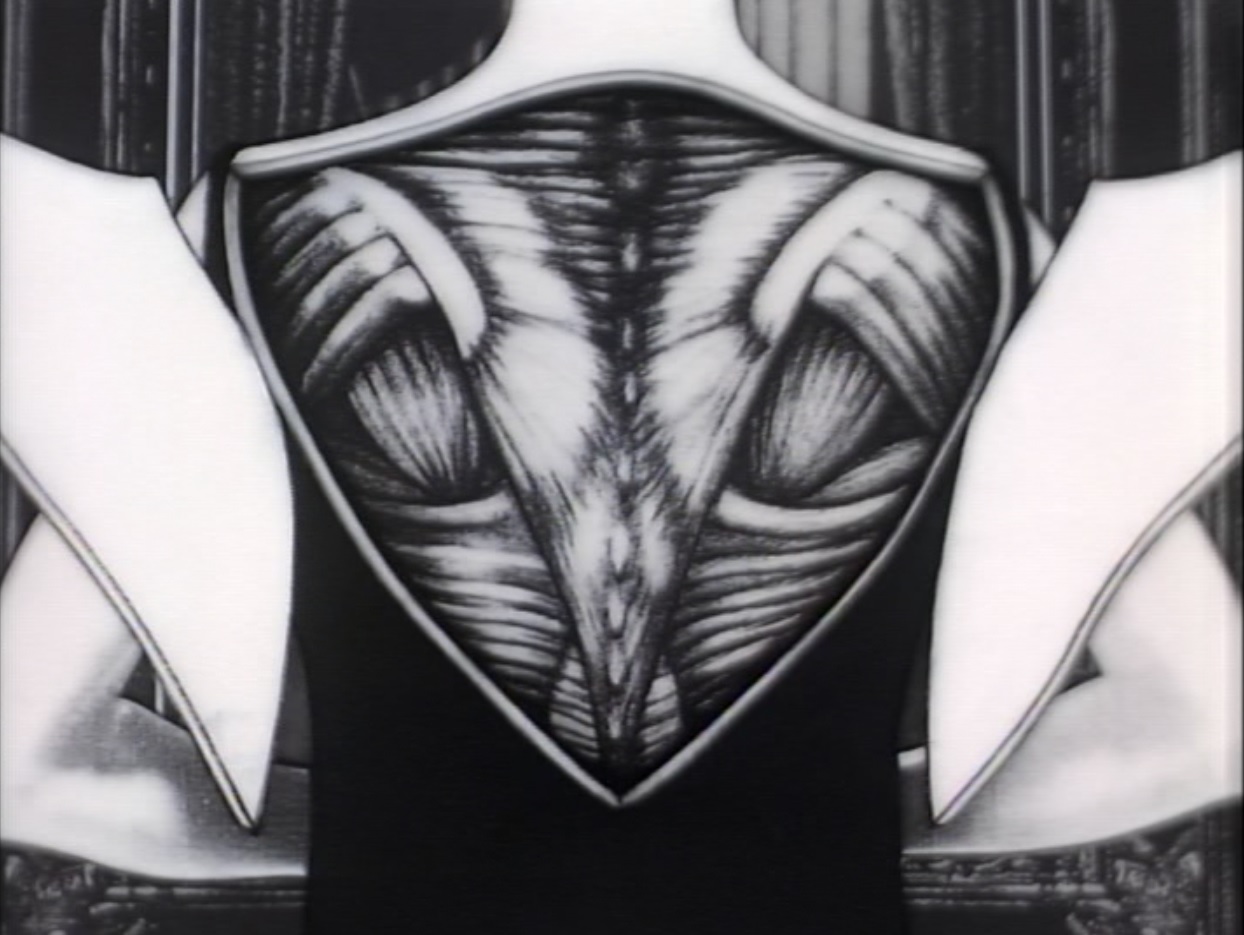
In ‘How Wings Are Attached to the Backs of Angels’ Craig Welch combines traditional animation, cut-out animation and pixilation to tell a puzzling but ominous tale about a man obsessed with contraptions and redesigning humans into angels. In one of his contraptions he attaches wing bones to a skeleton, but then a real woman (the pixilated actress Louise Leroux) appears…
Most disturbing is the scene in which the man caresses the woman’s shoulder blades, imaging their inner workings. The discomfort is enhanced by the use of a real woman. Welch’s cinematic style seems to be influenced by that of Raoul Servais and Terry Gilliam, and shares a high level of surrealism with these celebrated film makers. The animator certainly knows how to show and don’t tell; his film retains a morbid atmosphere throughout, all by suggestion and by clever cutting.
Watch ‘How Wings Are Attached to the Backs of Angels’ yourself and tell me what you think:
‘How Wings Are Attached to the Backs of Angels’ is available on the DVD ‘Desire & Sexuality – Animating the Unconscious Vol.2’
Director: Igor Kovalyov
Release Date: 1996
Rating: ★★★
Review:
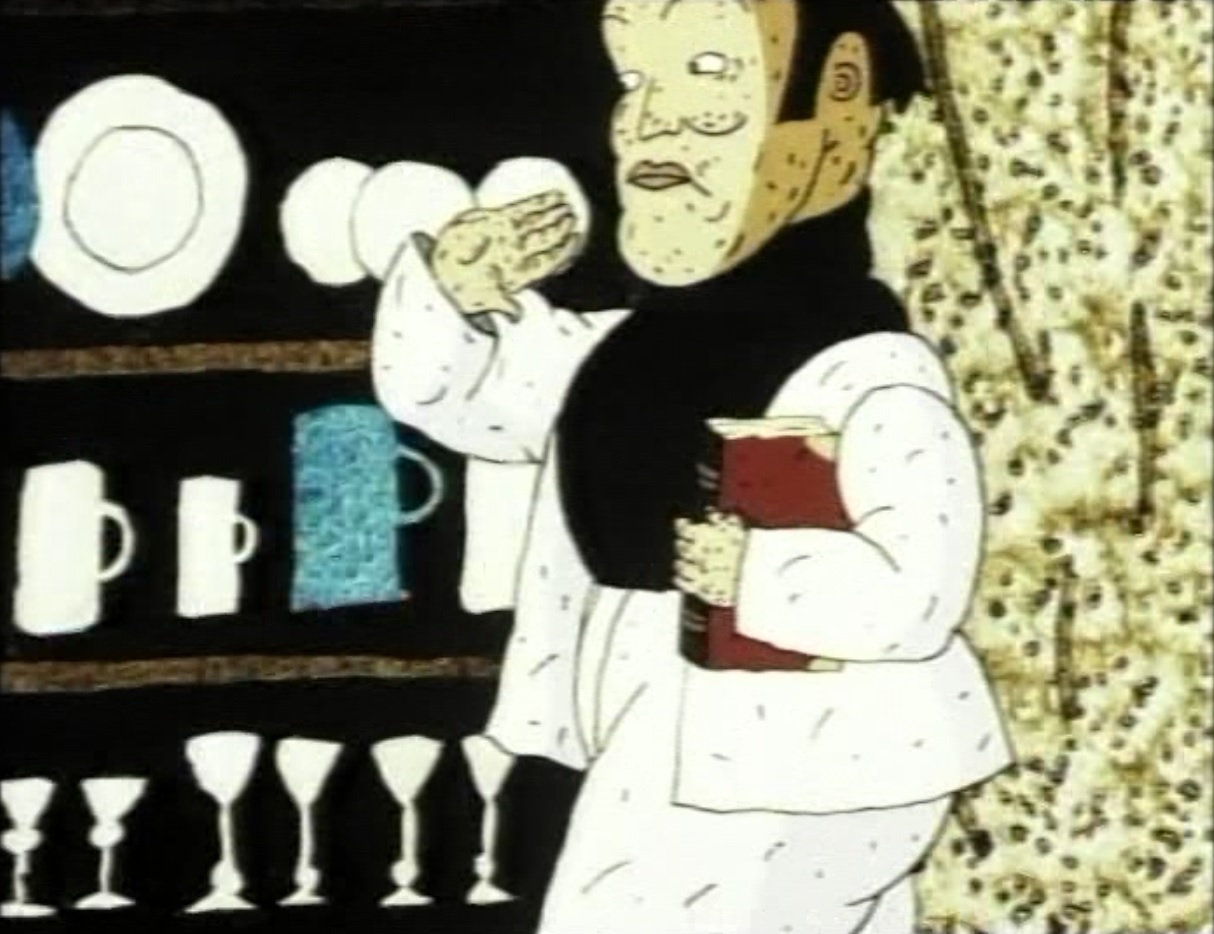
Made during his stay at the Klasky Csupo studio ‘Bird in the Window’ is Igor Kovalyov’s first film made in the US.
Despite his contemporary commercial work on e.g. Rugrats and Duckman: Private Dick/Family Man, Kovalyov’s independent style has lost nothing of its enigma. ‘Bird in the Window’ is a film in several very short scenes with mutual relationships that are hard to decipher.
A man returns home to his house in the countryside, but his wife clearly hides something for him. Why can’t he see the child that’s running around? What’s with the two Chinese characters playing chess? And what’s the role of the gardener? ‘Bird in the Window’ certainly suggests a lot without clarifying a thing. Even the opening scene in which a bird violently chases a winged bug is as disturbing as it is puzzling. ‘Bird in the Window’ may be less obviously surreal than his celebrated ‘Hen His Wife’ (1989), Kovalyov’s way of story telling still is one of suggestion, not explanation.
Note how Kovalyov uses seemingly trivial images to tell his tale: the man throwing an apple at the gardener, the man eating all the grapes, the woman lying in a bath, a cockroach creeping – all these short scenes contribute to the ominous feeling, full of suppressed eroticism.
The tense atmosphere is greatly enhanced by the great sound design, which offers us many noises not seen on the screen: cows mooing, a plane flying by, a clock chiming, the woman running down the stairs and slamming doors, a dog barking etc.
Watch ‘Bird in the Window’ yourself and tell me what you think:
‘Bird in the Window’ is available on the DVD ‘Desire & Sexuality – Animating the Unconscious Vol.2’
Directors: Donovan Cook & Bob Hatchcock
Airing Date: July 6, 1996
Stars: Duckman
Rating: ★★★½
Review:

The final episode of season three sees the return of Duckman’s arch nemesis King Chicken, not seen since ‘Color of Naught‘, episode four from the same season.
This time King Chicken is not behind some evil scheme, but simply turns out to be the father of Tammy, Ajax’s new girlfriend, whom Duckman, Aunt Bernice and Ajax are visiting one night. During the episode we never see Tammy, but the visit turns out to be surprisingly interesting.
For this finale episode the creative team once again returned to comedy based on the personas and their mutual relationships, and the result is rewarding. The awkward visit proves to be much more interesting than mindless absurdism of the previous two episodes. The team even manages to make the ending a particularly poignant one, ending the series on a surprisingly emotional tone, at a time I thought they were forgotten how to do that.
Watch ‘Cock Tales for Four’ yourself and tell me what you think:
This is Duckman episode no. 42
To the previous Duckman episode: The Amazing Colossal Duckman
To the next Duckman episode: Dammit, Hollywood
‘Cock Tales for Four’ is available on the DVD-box ‘Duckman – The Complete Series’
Director: John Eng
Airing Date: June 29, 1996
Stars: Duckman
Rating: ★
Review:

In ‘The Amazing Colossal Duckman’ Duckman grows taller each time he has a temper…
It’s hard to say anything positive about this episode, which feels not only uninspired, but even desperate in trying to squeeze some sort of story out of the Duckman character. How one now longs to the deeper and more complex character depictions of season one and two! I’m baffled that after episodes as this series got even another season…
But luckily, the next and last episode turns out to be a much more interesting affair.
Watch ‘The Amazing Colossal Duckman’ yourself and tell me what you think:
This is Duckman episode no. 41
To the previous Duckman episode: The Longest Weekend
To the next Duckman episode: Cock Tales for Four
‘The Amazing Colossal Duckman’ is available on the DVD-box ‘Duckman – The Complete Series’
Director: Henry Selick
Release Date: April 12, 1996
Rating: ★★★½
Review:

Based on the children’s book by Roald Dahl from 1961 ‘James and the Giant Peach’ is, in fact, a hybrid, starting and ending as a live action movie, with the middle forty minutes (ca. half the movie) being done entirely in stop-motion.
The opening scenes set ‘James and the Giant Peach’ as one of the great fantasy films of the nineties. The sets and atmosphere are magical and dreamlike, with no attempt at reality. James’s horrific aunts, too, are grotesque and deeply rooted in caricature. They are excellently played by British actresses Miriam Margolyes and Joanna Lumley, who are allowed to play their personas as broadly as possible. Young James, in contrast, remains perfectly normal, and Paul Terry’s performance is on the brink of boring.
Despite the great opening scenes, the real fun starts when James descends into the giant peach. During this scene he transforms into his puppet self, and inside he meets a sextet of giant ‘insects’ (in fact, three of them are insects, the others being a myriapod, an arachnid and an annelid), with whom he decides to fly to New York, cleverly using sea gulls to propel the peach into the air.
Except for the all too bland glowworm, the arthropods are delightful characters: there is a very American sounding boastful and bragging centipede (Richard Dreyfuss), a motherly ladybug (Jane Leeves), an aristocratic and knowledgeable grasshopper (Simon Callow), an anxious and gloomy earth worm (David Thewlis), and a femme fatale-like but friendly French female spider (Susan Sarandon). The design of these is less eccentric than that of the protagonists in ‘The Nightmare Before Christmas’, but still have some freaky touches, most notably Miss. Spider’s eyes, which each consist of two yellow eyeballs. Moreover, they all have the correct number of legs, with Miss Spider’s eight legs all ending in elegant boots. The animation, too, retains some creepy-crawly quality, and Miss Spider remains a little scary, despite her friendliness.
The voice cast is excellent, and most of the humor originates from the interplay between these characters, but there is plenty of action anyway, with the bugs having to battle a mechanical shark, defend themselves against a ghost ship, and fight starvation.
Unfortunately, after 59 minutes we return to live action, when James and his friends land in New York. True, this New York remains a fantasy-product, with very stagy and crooked sets, but lasting a staggering 30 minutes this finale turns out to be overlong and weak. It does not really help that the film makers decide to make the aunts survive the crushing of their car and to follow James into New York, an idea not in the book. Believability is certainly breached in these scenes, because of the fake character of the sets, some wooden action of the crowds, and the strange interplay between the grotesque aunts and the more down-played Americans. Moreover, the insects are mostly absent from these scenes, which only show that young actor Paul Terry cannot carry these scenes on his own, which seem to drag without inspiration.
Another letdown of this film are the four songs by Randy Newman. All four are weak and forgettable. Even worse, they are clearly superfluous, and they threaten to stall the action instead of helping the story forward. Luckily, there are only four of them, making ‘James and the Giant Peach’ much more tolerable as a film than ‘The Nightmare Before Christmas’ was, but nevertheless I regard this film yet another victim of the unwritten rule that every animation film should be a musical, which was prevalent in the 1980s and 1990s.
The overlong finale and unwelcome songs prevent ‘James and the Giant Peach’ to become an all-time classic, and certainly it was not well received back then, becoming a box office bomb. With this the short Disney adventure into stop motion ended. This is pity because the stop motion animation is excellent and delightful to watch throughout.
There is also a fair deal of computer animation, surprisingly executed by Sony Pictures Image works, who did an excellent job on the rhinoceros, some dancing clouds, and the mechanical shark. The latter, especially, is a great piece of computer animation, as it blends surprisingly well with the stop-motion and never loses its fantastical character.
Disney thus may have stopped making stop motion films, but both Tim Burton and Henry Selick continued to follow this path, with Tim Burton making ‘Corpse Bride’ in 2005 and ‘Frankenweenie’ (again for Disney) in 2012, while Henry Selick joined Will Vinton’s LAIKA studio in 2005 to make the widely acclaimed ‘Coraline’ (2009).
Watch the trailer for ‘James and the Giant Peach’ yourself and tell me what you think:
‘James and the Giant Peach’ is available on Blu-Ray and DVD
Director: Raymie Muzquiz
Airing Date: June 22, 1996
Stars: Duckman
Rating: ★
Review:

The decay of the third Duckman season continues with ‘The Longest Weekend’ in which Duckman’s street goes at war with the neighboring Dutch Elm Street.
The episode is as talkative as it is pointless, and even the numerous war film references fall flat. At this point the only attractions left are Klasky-Csupo’s idiosyncratic character designs and background art, which both remain interesting throughout.
Watch ‘The Longest Weekend’ yourself and tell me what you think:
This is Duckman episode no. 40
To the previous Duckman episode: Exile in Guyville
To the next Duckman episode: The Amazing Colossal Duckman
‘The Longest Weekend’ is available on the DVD-box ‘Duckman – The Complete Series’
Airing Date: June 1, 1996
Dee Dee’s Room
Director: Genndy Tartakovsky
Stars: Dexter
Rating: ★★★★½
Review:
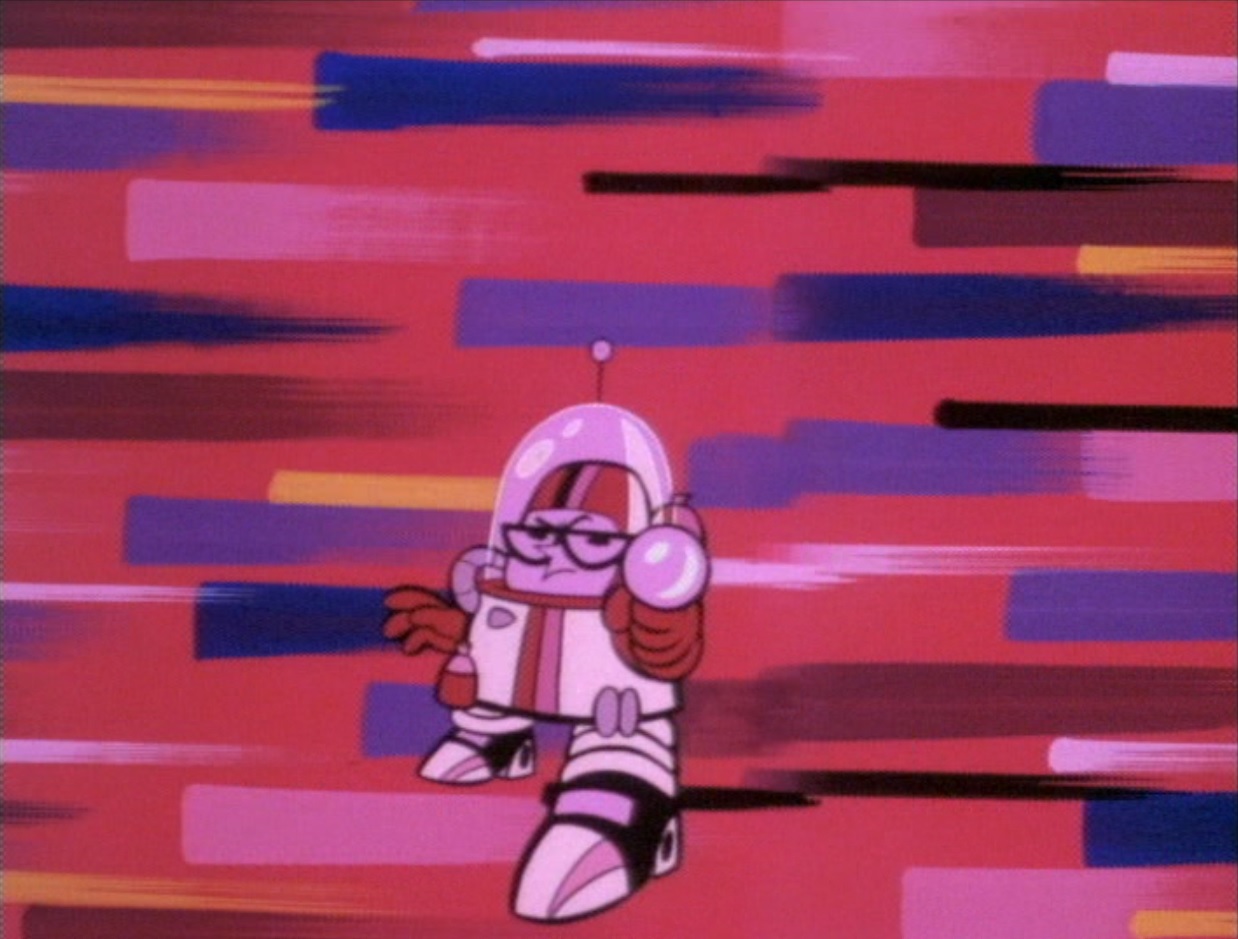
In this episode Dexter tries to retrieve a bread slicer from Dee Dee’s room.
Dexter treats his big sister’s realm as a foreign planet, and enters it in a space suit. The humor comes mostly from Dexter’s pompous, overblown voice over, making the events much more exiting than they really are.
There’s strikingly little animation in this episode, as many scenes are done in stills, and many movements done in only three or four drawings, with no inbetweening whatsoever. This visual style does add to the dreamlike atmosphere that permeates this episode. It thus is a great use of limited animation as an artistic choice, not necessarily an economical one.

Directors: Paul Rudish & Genndy Tartakovsky
Stars: Dial M for Monkey
Rating: ★
Review:
Dial M for Monkey: Huntor
‘Dial M for Monkey’ never were a successful addition to the ‘Dexter’s Laboratory’, but the ‘Huntor’ episode is particularly disappointing.
In this episode Monkey has to battle a lion-like alien hunter with an Australian accent. This is a particularly talkative opponent, and Huntor’s rambling fills almost the entire soundtrack.
This alone accounts for a tiresome watch, but this episode also demonstrates that the ‘Dial M for Monkey’ doesn’t share the same eye for design as the surrounding ‘Dexter’s Laboratory’ sequences. The character designs are more generic, more like the dull 1970s Hanna-Barbera designs than Dexter’s 1950s UPA world, and the color schemes are uninventive and ugly. In fact, ‘Huntor’ emulates the cheap, ugly and forgettable cartoon style of 1970s Hanna-Barbera Saturday morning cartoons too much for comfort. The 1970s were a low point for studio animation, and I don’t want to be reminded of that, thank you.
The Big Sister
See the post devoted to this episode
‘Dee Dee’s Room/Dial M for Monkey: Huntor/The Big Sister’ is available on the DVD ‘Dexter’s Laboratory Season One: All 13 Episodes’


